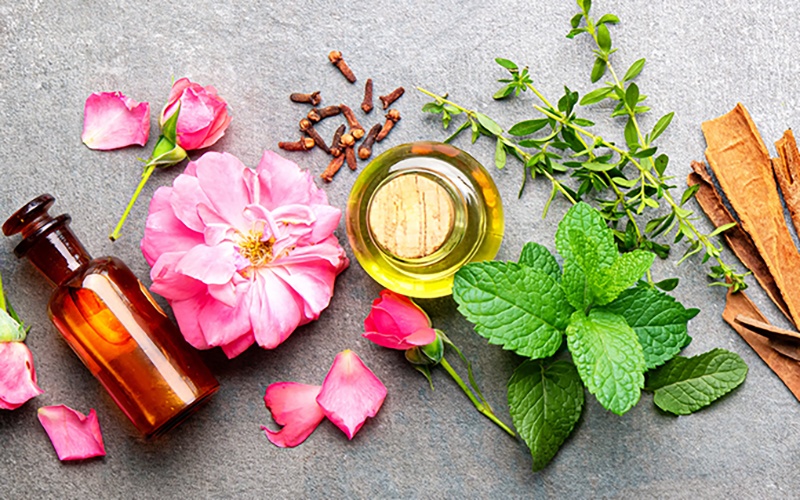Understanding Endocrine Disruptors: What They Are and How to Avoid Them

The following article was written by Heinen’s Chief Medical Officer, Dr. Todd Pesek, MD.
I speak with Heinen’s Wellness Consultants on a regular basis to keep a pulse on the curiosities and interests of Heinen’s customers as it relates to wellness. I’ve learned that customers are actively seeking more information on endocrine disruptors, so let’s talk about what they are, what they do and how you can regulate them.
What are Endocrine Disruptors?
Like using the wrong key in a lock, endocrine disruptors are natural or synthetic chemicals within the body that interfere with our hormone balance by blocking hormones from reaching their appropriate receptors.
Hormones play a key role in our endocrine (a.k.a hormonal) system and they are very balanced, so when endocrine disruptors are present, even in a small amount, they can lead to an array of health concerns.
We depend on our hormones for overall health and wellness, as our endocrine system controls much of what we are and do. For example, our metabolism, energy levels, digestion, growth and development, immunity, fertility, reproduction, emotions and even how we deal with stress are all affected by hormones, so it’s important we keep them in balance.

How are We Exposed to Endocrine Disruptors?
Endocrine disruptors are quite commonly found in our water and food supply, but also in cosmetics, food and beverage packaging, and even things like children’s toys and carpeting and upholstery.
It’s true that we cannot live in a toxin-free world, however, with some effort, we can work to reduce the toxins in our own lives.
According to the Endocrine Society, of the relevant nearly 100,000 synthetic chemicals, roughly 1-2% of those are endocrine disruptors. With some of the most common being:
- Atrazine: One of the most common herbicides on food.
- BPAs: Commonly in plastics, packaging and toys.
- PFAS and PBDEs: Common flame retardants used everywhere from textiles to bedding to nonstick pans.
- Dioxins: Herbicide used in paper production
- Perchlorates: Industrial chemicals commonly found in ground water.
- Phthalates: A large group of compounds used in plastics, packaging, cosmetics like nail polish, shampoo, conditioner and fragrances, hoses and tubing and toys.
There are others too including:
- PCBs and Triclosan: Used widely until banned in lubricants and personal care products respectively.
- Fluorine, Chlorine, and Bromine: Added to water and used as preservatives.
- Lead, Mercury and Cadmium: Heavy metals that are present all around.

These are all endocrine disruptors.
The point is, we can be exposed to endocrine disruptors through water, food and beverages, air, pesticides and herbicides, packaging, cosmetics and more. We cannot avoid them; however, we can choose wisely and mitigate our exposure.
How to Avoid Endocrine Disruptors
Let’s start with a basic tenant—try not to drink, eat, or put on your skin any known endocrine disruptors. Here are some specific ideas.
- Drink pure water (lots of it!)
- Avoid highly processed foods and shop local, when possible. When you grocery shop, try to stay on the perimeter of the store as much as possible. The highly processed packaged foods tend to be found in the middle aisles; however, there are healthy packaged food options on the market and Heinen’s makes it a priority to find them. Look for the Fx™-Approved button by packaged items to know which ones we recommend. Additionally, shop local. Heinen’s is basically a farmer’s market year-round thanks to product experts who work with local growers and producers to source the freshest and highest quality products. The closer food is grown to you, the higher the nutritional content.
- Eat local and organic whenever possible. The fewer herbicides and pesticides you consume, the better! Organic product guarantees this and Heinen’s has an ample assortment of organic options.
- View what you put on your skin as “skin food!” Use clean cosmetics and moisturizers. Check out the Environmental Working Group, they have a free clean cosmetic guide available on their website.
- Sweat it out. When you’re physically active you sweat. When you sweat, you’re eliminating toxins. Prioritizing movement is a great way to control hormone disruptors.
- Try and avoid stress. One of the most common endocrine disruptors is stress. While stress is often unavoidable, work to discover coping mechanisms that work for you.



